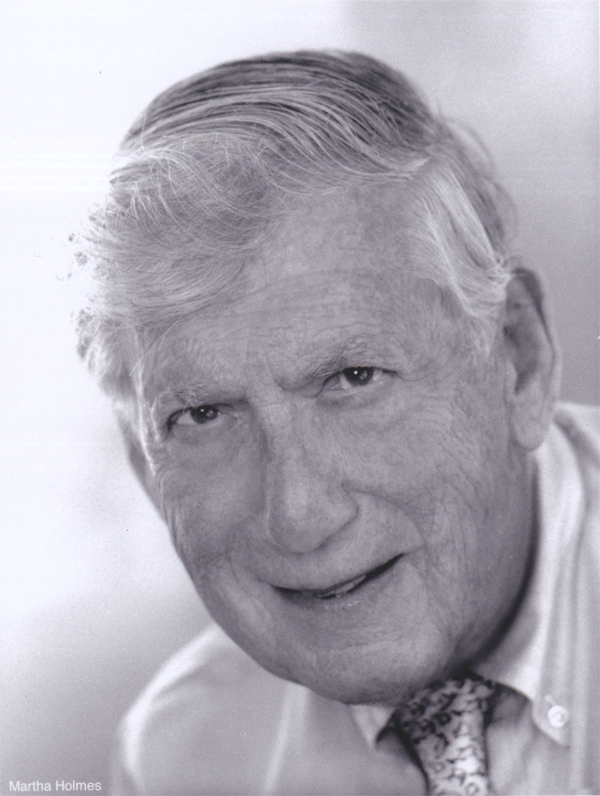
Born
in New York City, February 1, 1920, Roy Rowan was
raised in Manhattan's Greenwich Village. At
the age of 12, he began writing, editing, and
publishing a four-page, mimeographed neighborhood
newspaper, a venture that sparked an ambition to
become a journalist. Rowan graduated from
Dartmouth College in 1941, and received his MBA from
Dartmouth's Amos Tuck School of Business in April
1942. Drafted into the US Army the following
month, one of this first duties was to escort
Italian Prisoners of War back from North Africa on
an Army Liberty ship.
He later spent two years
serving in New Guinea and the Philippines, before
mustering out of the service as a major in February,
1946.
In
1946, unable to secure a job as a foreign
correspondent, Rowan joined the United Nations Relief and
Rehabilitation Administration (UNRRA) during the
Chinese Civil War between Mao Zedong's Communists
and Chiang Kai-shek's Nationalists. There he also
began photographing and writing freelance articles
about the conflict, sending his pictures and articles back to
major magazines in the United States in the hope of
establishing himself as a journalist.
Frustrated by the lack of response, he decided to return to the
U.S. Shortly before leaving Shanghai in December
1947, the Time-Life
bureau chief approached him and informed him that
Life magazine had printed several of his
photographs and asked if Rowan could write an article
on the war in Henan Province. The next month,
Life hired him as their China and
Southeast Asia correspondent. Rowan then
covered all the major battles of China's Civil War
leading up to the fall of Shanghai in May 1949. Following the Communist takeover,
Rowan served as Life bureau chief in Hong
Kong, Rome, Tokyo (mainly as a war correspondent in
Korea), Bonn (covering the Cold War in Europe), and
Chicago. During that last assignment, he traveled
around the country for a month with Jimmy Hoffa, the
notorious Teamster boss, for an exclusive three-part
series on the all-powerful, but corrupt labor union.
In 1961 Rowan was transferred to New York City and
appointed Life’s assistant managing editor in
charge of the magazine’s worldwide news coverage.
When JFK was assassinated in 1963, he was having
lunch with the company’s editor-in-chief, Henry
Luce, who ordered him to fly out to the printing
plant in Chicago to stop the presses and remake the
magazine, using the now-famous Zapruder film that
pictured the actual shooting of the president.
In
1969, Rowan began working with Time Inc. on his
proposal for a new waterfront magazine. When
Time's financial backing of the magazine fell
through, Rowan left Time Inc., and joined by nine
other investors to found Seascape Publications in
1970 - Rowan serving as both President of the
newly-formed company and Editor of On The Sound
Magazine. In November 1972, Universal Publishing acquired
On The Sound, and Rowan returned to Time
as its bureau chief in Hong Kong - covering China, Thailand, Indonesia, Australia, New Zealand,
Cambodia, and Vietnam. Rowan was evacuated
from Saigon on one of the last helicopters in April
1975. He then wrote his first book,
The Four Days of Mayaguez, in 1975.
In 1977, Rowan left Time and
became a senior writer for Fortune Magazine.
Between then and his retirement in 1985, he wrote more than
65 major articles for the
magazine, including an exclusive 15-page report on
the “Top 50 Mafia Bosses in America.”. He "retired" in 1985 but continued to write two or three
Fortune articles a year, as well as his
second book, The Intuitive Manager in 1986.
A Day in the Life of Italy, a project Rowan
co-edited, was released in 1990.
In the book, 100 photographers
shooting at different locations around Italy,
recorded in detail what happened over a 24-hour
period on April 27, 1990. In January of that same
year, Rowan spent two freezing weeks on the streets
of New York City living as a homeless man for a
10-page eyewitness report in People. His
bylined articles, besides those in Time, Life,
and Fortune, have appeared in Smithsonian,
the Atlantic Monthly (a 6,000-word report on
his own battle with cancer), Reader’s Digest,
and the New Republic.
His third book,
Powerful People, was published in 1996,
followed closely by First
Dogs: American Presidents and Their Best Friends
in 1997. It was made into a one-hour documentary and
aired on the Discovery Channel. Rowan wrote
the narration for actor Kelsey Grammar. A year later, his fifth book, Surfcaster's
Quest, a return to Rowan's passions - the
waterfront and fishing - was published. In
2003, Rowan published his first work of fiction,
Solomon Starbucks Striper: A Fish Story About Following
Your Dreams. His seventh book,
Chasing the Dragon: A Veteran Journalist's Firsthand
Account of the 1946-1949 Chinese Revolution, was
published in 2004 and has been optioned in Hollywood
for a feature film. His eighth book,
Throwing Bullets: A Tale of Two Pitchers Chasing the
Dream was published in 2006. His ninth book, Never
Too Late: A 90-Year-Old's Pursuit of a Whirlwind
Life, was published in 2012.
Rowan has served as President of the Overseas Press
Club of America, the Time-Life Alumni Society, and
the Dutch Treat Club, a 100-year-old organization
for members of the arts. In 1995 Rowan received an
honorary doctorate from Hartwick College in Oneonta,
New York. The archives there have now acquired
all of his papers and photographs. Rowan
recently received the 2006 Henry R. Luce Award from
Time Inc. for lifetime achievement in journalism.
He and his wife, Helen
Rounds Rowan, live in Greenwich, CT and Block
Island, RI. In July 2012, AARP featured them in the
article "Married
60 Years: What's Their Secret?" They have four sons, Dana, Douglas,
Nicholas, and Marcus.


